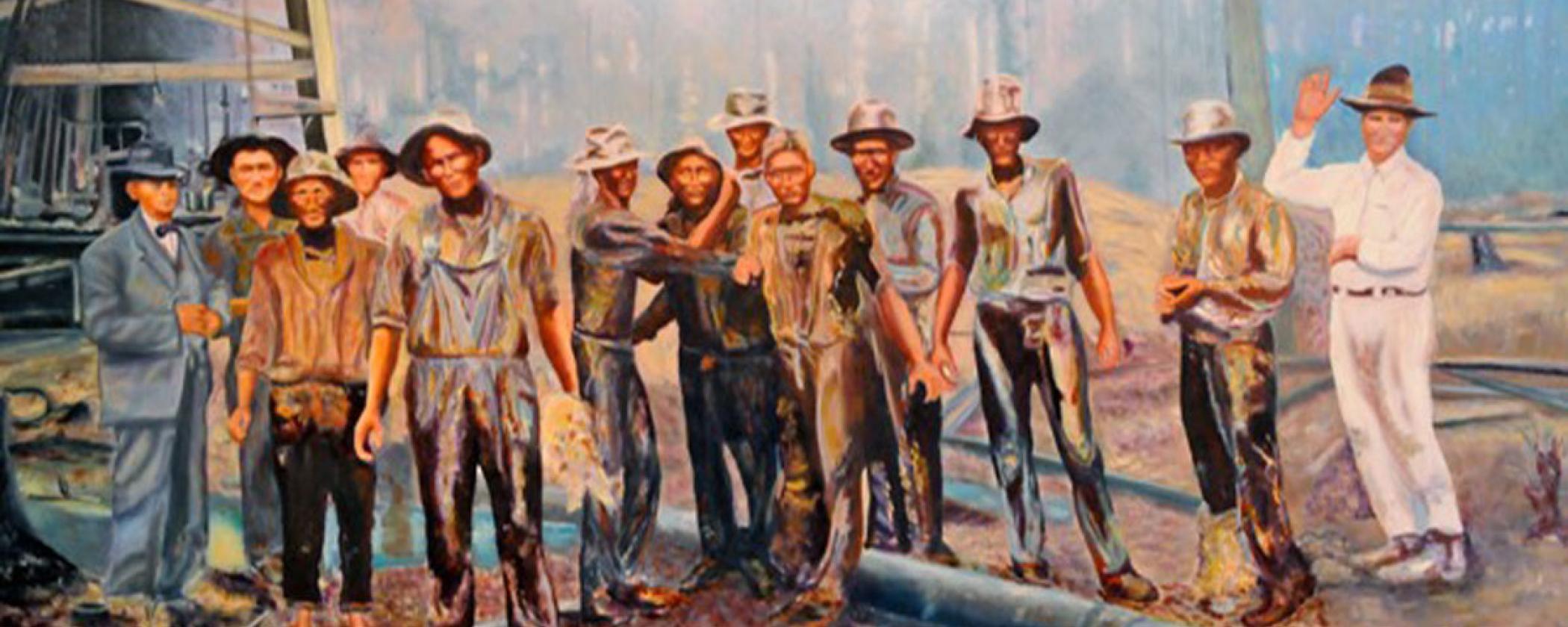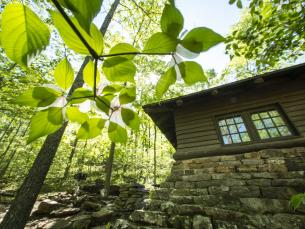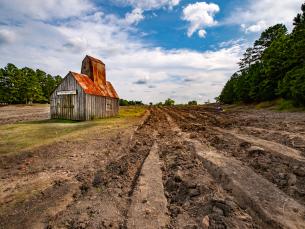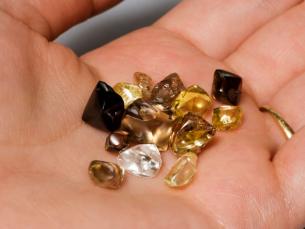
If we could go back 100 years, newspaper sellers in Arkansas would be shouting: “Extra, extra, read all about it! Black gold found in south Arkansas, bringing droves of people from all over the country!” Read more to see this story unfold.
The oil-rich town of Smackover is in the heart of the Arkansas oil fields. The 1920s south Arkansas oil boom brought danger and destruction, but also a sense of opportunity and change that has lasted through the generations.
Today, one mile south of town is the Arkansas Museum of Natural Resources, which aims to connect people to the lasting cultural and economic impacts resulting from the discovery of oil in south Arkansas during the 1920s. This goal is accomplished by collecting, preserving, and interpreting the ever-changing story.
This photo essay will reveal how the events of the 1920s brought people from across the country seeking to strike it rich in the oil field. At first, the oil boom brought in its wake a lot of turmoil, but eventually, it left a legacy of change and opportunity for the people of south Arkansas that will benefit generations to come.

Before the 1920s oil boom, Smackover was a quiet little town of fewer than 100 people.

Oil derrick “Busey #1,” located near El Dorado, struck oil in January of 1921. The drilling drew a crowd of local people, as they eagerly awaited to see if south Arkansas had any oil. The ground shook, as the Busey roared with a torrent of oil that rained down on people’s homes, farm crops, and laundry up to a mile away from the well. So began the oil boom.

As people rushed to find as much oil as they could, as quickly as possible, not everyone was careful. The oil field frenzy littered the south Arkansas landscape with craters and fires. On May 14, 1922 at a drilling site near Norphlet, roughnecks, who were oil field workers that operated drilling platforms, struck a deposit of natural gas which sent red clay raining down onto the surrounding communities. A few days later, the gas erupted into flames, resulting in a crater 75 feet deep and 450 feet across. People said that the flame could be seen from miles away.

Located behind the Snow Hill Baptist Church on the farm of Rev. Charley Richardson and on land leased by Sid Armstead, was the well that would forever change south Arkansas. The metal derrick was known as the Richardson #1, the first well in south Arkansas’s biggest and most productive oil field.

In July of 1925, The Camden Evening News reported on the record level of oil production, prompting even more people to rush into south Arkansas.

Tens of thousands of people flooded into south Arkansas during the oil boom. Smackover went from a small town of 93 people to 25,000 in only a couple of months.

People came to south Arkansas to find their fortunes in the oil fields. Many young men took jobs as roughnecks, which was dangerous but high-paying work.

With the abundance of people crowding into south Arkansas, mischief was bound to follow.


With the oil boom crowds came the problem of crime. Local law enforcement was at first overwhelmed by the sheer number of people. One man who lived during that time described the boom as being like the old West. Groups of vigilantes chased out lawbreakers and during the “Battle of the Ouachita,” tore down some barrelhouses, which were similar to today’s bars but with dancing, gambling, and illegal alcohol hidden in wooden barrels due to Prohibition.

After many people left south Arkansas to follow the next boom in Texas or Oklahoma, local families were able to reap the benefits of the boom. The Hegwood family were among the many landowners who became instant millionaires, when they received the news that oil had been discovered on their property. Some of the land in south Arkansas rose in value up to millions of dollars. Others went bankrupt in their search for black gold. Some families built small oil companies called “independents” that are still in operation today.

With the rush of people into south Arkansas, many lacked appropriate housing. To meet the demand, some farmers opened their homes as room-and-boards, while oil companies pitched large tents for sleeping roughnecks. Some workers had their own tents, lived in shacks made of tin, or even paid people a quarter to sleep on their front porches or in barber chairs. A solution to the problem came with the construction of simple shotgun houses like the one pictured.

As a result of the events of the 1920s oil boom, new industries developed, providing jobs and opportunity for the people of south Arkansas.
This photo essay showed a glimpse of the events surrounding the 1920s rush for black gold. The rush led to many opportunities for the people of south Arkansas due to the development of numerous industries and businesses that started during the oil boom. Today, these industries provide employment for workers throughout the region.
As you remember the boom, think of how it not only devastated the land but also changed people’s daily lives. Think of how some became instant millionaires and others learned from their losses in their quest to become wealthy. Because of the rush for black gold, the people of south Arkansas have many rich stories to tell that will be remembered for generations to come.
Come visit the Arkansas Museum of Natural Resources to take a stroll down a replica Boomtown Street and experience how the quiet towns of south Arkansas turned into the wild, but prosperous region of the state.
Resources: All photographs from the Arkansas Museum of Natural Resources Collection and Main Exhibit Gallery.
 |
Paula White started her journey with the Arkansas Museum of Natural Resources in 2015 as a Museum Program Assistant, now Interpreter II. Her background includes a rich 30 year history in education, including summer programs, elementary schools and Head Start programs. She holds an associate degree in Early Childhood Education and has completed additional coursework in history and science. Since working for ADPHT and experiencing history come to life, she has a newfound appreciation for the hiking trails, nature, and the rich stories surrounding the 1920s south Arkansas oil boom. |
|---|---|
|
Charles Licciardi taught school for 16 years in Louisiana. He has degrees in history and education. Originally from New Orleans, Charles moved to south Arkansas with his family in 2012 to begin his career at the Arkansas Museum of Natural Resources. Charles enjoys reading, tending the family garden and yard, as well as spending time with his family watching movies and visiting new places. |



